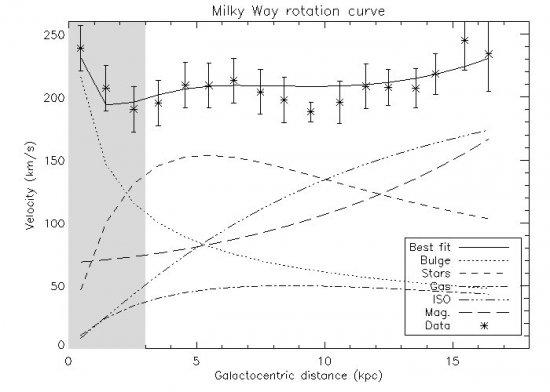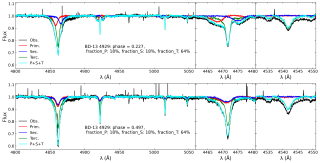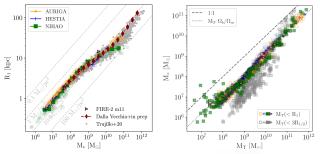The study of the disk rotation curve of our Galaxy at large distances provides an interesting scenario for us to test whether magnetic fields should be considered as a non-negligible dynamical ingredient. By assuming a bulge, an exponential disk for the stellar and gaseous distributions, and a dark halo and disk magnetic fields, we fit the rotation velocity of the Milky Way. In general, when the magnetic contribution is added to the dynamics, a better description of the rotation curve is obtained. Our main conclusion is that magnetic fields should be taken into account for the Milky Way dynamics. Azimuthal magnetic field strengths of B phi ~ 2 μG at distances of ~2 R0(i.e. 16 kpc) are able to explain the rise-up for the rotation curve in the outer disk.
Out best-fit model for the rotation curve of the Milky Way. Asterisks represent the natural weighted radial bins derived from observational data by Sofue et al. (2009) with their associated error bars. The different lines represent the contribution of the
Advertised on



